Point of View
Sukanya Sankar, Trustee, The Sruti Foundation that has, over the last three decades been publishing the Sruti magazine, makes some keen observations on the shifting nature of the arts, how the magazine strives to preserve tradition while support innovation and how in a sense, it is crucial to keep honing your craft and practice resilience for a long-lasting meaningful stint in this world of the arts… As a publisher in the world of Indian classical performing arts, what are some of the shifts you have seen in the industry, especially in the context of dance In an industry that is not too kind in viewing or accepting “changes/shifts” there are a few noticeable shifts, specially post the pandemic. Let’s take for instance, the rise of digital platforms that has allowed dancers to reach wider audiences through online performances, classes, and workshops. This has also witnessed a noticeable increase in younger performers and audiences. We are also witnessing interesting interdisciplinary collaborations, blending classical dance with other art forms like contemporary dance, theater, and visual arts. Dancers are also increasingly using their arts to engage with social and political issues, reflecting contemporary themes and narratives, including gender, identity, and social justice. Additionally, international collaborations and contributions from the Indian diaspora are fostering cross-cultural exchanges. The emphasis on inclusivity, revival of forgotten traditions, And finally, Indian classical dance continues to gain international recognition, spreading the reach and appreciation of these art forms. Your publishing company is located in Chennai which is considered the Mecca of South Indian arts; what are some of the trends currently and does Chennai continue to occupy the position it did in the past even in the now? Chennai’s rich tradition of classical arts is nurtured by numerous esteemed institutions, schools, and sabhas. The city also boasts a vibrant ecosystem of performers, scholars, and enthusiasts, making it a pivotal center for the preservation, promotion, and innovation of Indian classical performing arts. Chennai’s traditional art scene, centered around its renowned sabhas, is witnessing a shift towards hosting performances in non-traditional venues. This trend provides a new and refreshing outlook, encouraging community involvement. However, there is a risk of audience fatigue due to the ‘breeding on familiar ground’ syndrome. Chennai’s evolving arts scene presents both opportunities and challenges, requiring a delicate balance between tradition and innovation to keep audiences engaged and the arts thriving. As one of the few publishing companies that focus exclusively on the arts, do you believe given the pace at which the arts are growing, there is a need for more publications to write and publish about the arts? The growth and dynamic nature of the arts underscore the need for an increased number of dedicated publications focused on arts coverage. Art publications play a crucial role in reaching diverse audiences, fostering greater awareness and appreciation for the arts across different demographics and regions. Additionally, they offer a multitude of perspectives and insights, enriching the overall discourse surrounding the arts. Emerging artists, in particular, greatly benefit from these platforms as they provide opportunities to showcase their work and gain recognition. Moreover, by documenting and promoting artistic endeavours, publications help cultivate a sense of community among artists, audiences, ultimately strengthening the arts ecosystem. The burgeoning arts scene necessitates the presence of more publications to effectively document, promote, and critically engage with the arts. This not only supports the growth and sustainability of the arts but also enhances cultural and intellectual life. The challenge is always finding new writers, new voices and perspectives. Sruti has a quality of legacy; what is the publishing company’s responsibility and how do you manage to ensure quality in a world that is flooded with equal amounts of mediocrity? We work with writers who have a good understanding of the arts. Their expertise provides the magazine with valuable insights and helps us maintain a high standard of content. That said we also establish and communicate clear editorial guidelines for contributors, outlining the quality and style expectations for submissions. We are transparent about our editorial decisions and processes and this helps build trust with our readers and contributors. We have a rigorous editing process, including multiple rounds of editing and fact-checking. This ensures that the content is accurate, well-written, and insightful. How do you use editorial discretion to ensure that only the best in the field make it to Sruti and to remain aspirational from a form and content perspective? At Sruti, we believe that the concept of ‘best’ is highly subjective. Instead of aiming to ensure only the perceived ‘best’ artists make it to our magazine, we focus on a different approach. We constantly engage with a wide array of artists, art organisers/organisations both established and emerging, through various mediums. What we value most is consistency, quality, and innovation in their work. While a viral video or a single impactful initiative can catch our attention, we look beyond the immediate impact to see what the artist has consistently contributed and how they have evolved over time. Understanding the pulse of our audience is crucial. We strive to feature a diverse range of artists and content in our magazine. We believe that giving equal importance to artists at different stages of their careers not only fosters a sense of community but also enriches our own growth and understanding of the art form. Having published contents featuring both legendary artistes and rising stars over the decades, what is your advice to today’s aspiring artistes? Spend time honing your craft, dedicating hours to practice to perfecting your skills. And don’t be afraid to seek guidance from those who have walked this path before you. Experienced mentors can offer valuable insights and help you navigate the ups and downs of pursuing a career in the arts. Find your unique voice and style. Authenticity is key in standing out in a competitive field. Audiences are drawn to artists who are genuine and who bring something fresh and original to the table. Success in the arts often requires persistence
Point of View
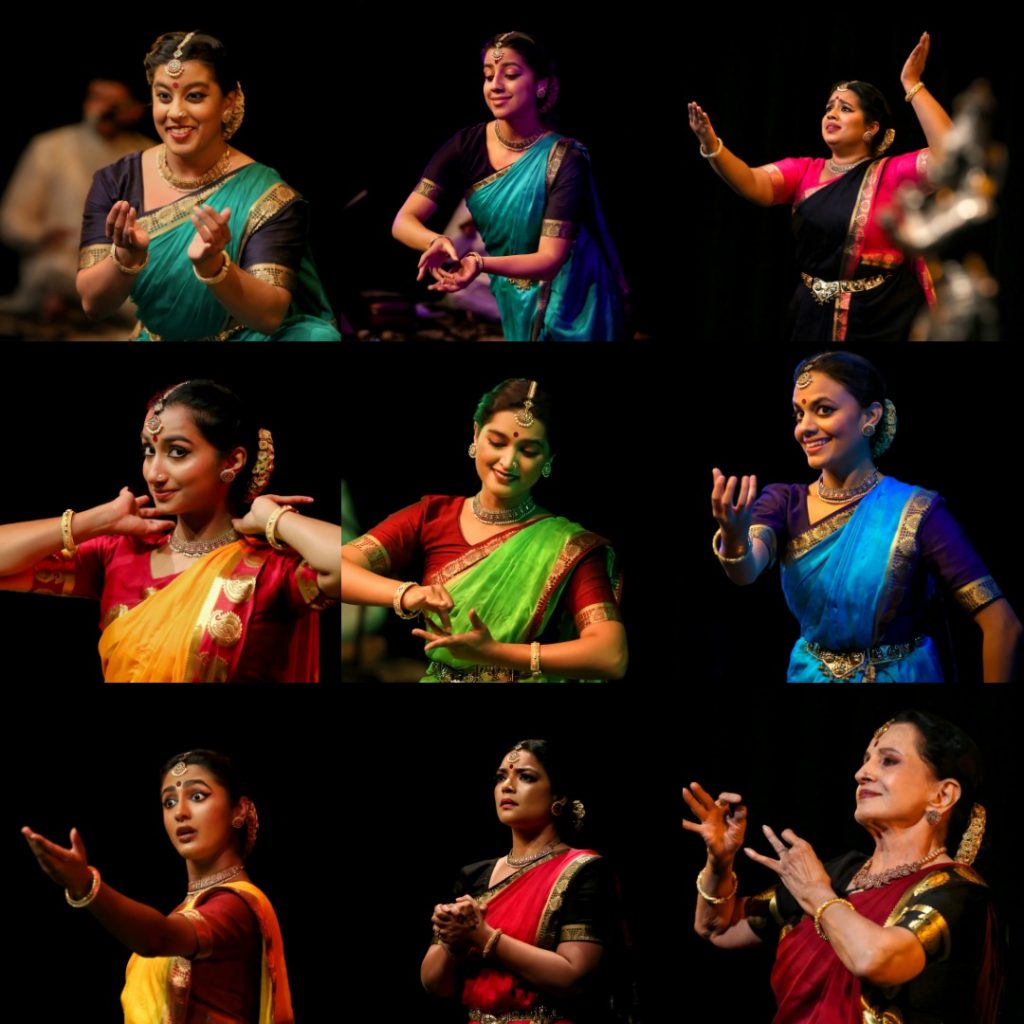
Canada-based dancer-choreographer and founder of Sampradaya Dance Creations in Toronto, Canada, shares her thoughts on the impact of the pandemic on her company and the arts in general. The pandemic was unprecedented and dramatic in its impact on the arts across the globe. One was totally unprepared for having to shut down and to cease operations so abruptly. Performances were cancelled, new creations left half completed and a general sense of alarm and anxiety about the future. Artists who have always lived on marginal livelihoods faced a precarious situation of having to consider giving up a life in the arts. For Sampradaya Dance Creations, it was imperative to stay in operation, to nurture our dancers and staff. To provide them emotional and financial support, continued use of our studios to rehearse to create. We in Canada were very fortunate to receive subsidies from the Government to support our operations, pay rent and overheads while our revenue sources had completely stopped. It was a time for introspection; to uncover the meaning and value of dance for each of us individually and how to make it more authentic, meaningful and impactful for our audiences and to society. We embraced the concept of sharing dance digitally through commissioned works, dance festivals, series and conversations. Supporting emerging artists through online mentored choreographic residencies was a priority for Sampradaya. A clear sense of a global community of dance artists emerged through the digital exchanges of dance conversations. Amidst the sense of isolation the pandemic forced upon us, the blessing of technological connectivity and new collaborative initiatives was a distinct breakthrough. I saw that there would be no turning the clock back; as we all prepared for a new era of hybrid offerings of live and streamed performances, well produced dance films and multi-disciplinary works showcased online Today, we see a return to in person classes and rehearsals for new productions. Audiences who were wary of in-theatre performances are eager for live performances and willing to go through the various steps of safety protocol. Larger theatres with Broadway scale shows are seeing encouraging levels of audience attendance. Live streaming of international dance productions has exponentially increased the offerings that one rarely had access to. Today we are on the threshold of a promising future of dance connectivity that can lead to engagement, collaboration, activism. We have the right to have a voice for the future. BOX
POINT OF VIEW
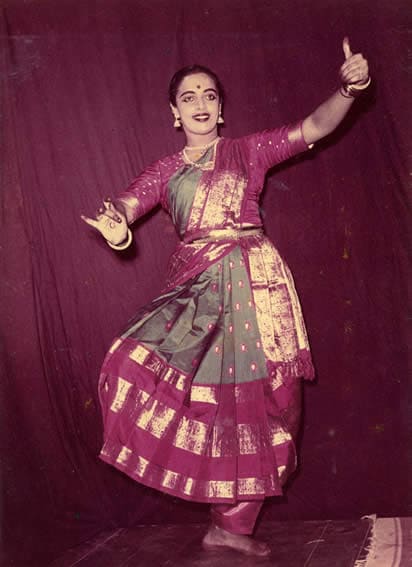
An excerpt from a speech by Neila Sathyalimgam as she received an award, where she recalls the genesis of the name, Apsaras and raises a toast to the future of Indian arts, in Singapore. “It was in the year 1977 and there was a competition. The competing groups had to come up with interesting names for their group, and I asked my husband to think of a name and it was he who came up with the name Apsaras. My husband was very smart while choosing that name and said to me, “Neila remember, you have the dancing angles in Chinese dance, Apsaras like Urvashi, Rambha, Menaka in our tradition. So I think it is a universal name in that sense. In south east Asia, this name would definitely go.” That’s how the name Apsaras was born! The Ceylon community here was very strong in the projection of all the arts like music, instruments, et al. They jumped up when they knew that my husband knew music and I knew dance and that’s how I started teaching and began my basic classes under the umbrella of the Ceylon Tamil Association at Handy Road. We are very very influenced by South East Asian culture. We do a lot of amalgamation with different dance traditions. In fact, in Angkor Wat, we had the Malay dancers for the warriors. I thought that was an excellent platform for us, to create a new idea in Indian dance where we collaborate with South East Asian traditions. I still enjoy those invigorating experiences on how to teach and it really keeps me occupied. My mind is always working on new choreographies, and what would I do next. In fact, I look at new fashion magazines, to get the latest material in terms of costumes and their trends; everything that surrounds me, you know. For a teacher to be successful, it is not only the teaching that matters; you must have every essence of every part of dance, from lightning to sound to music. So many things that you have to choose perfectly to perform an item. So I think I have done an extremely good job. Today, I find, I have at least 40 students who are already teaching and propagating dance. Singapore has a great future where the Indian dance platform is concerned, because the interest has grown. Singapore now is known for a platform of good standards and good knowledge and I hope we are going to continue with that trend in the years to come.”
POINT OF VIEW
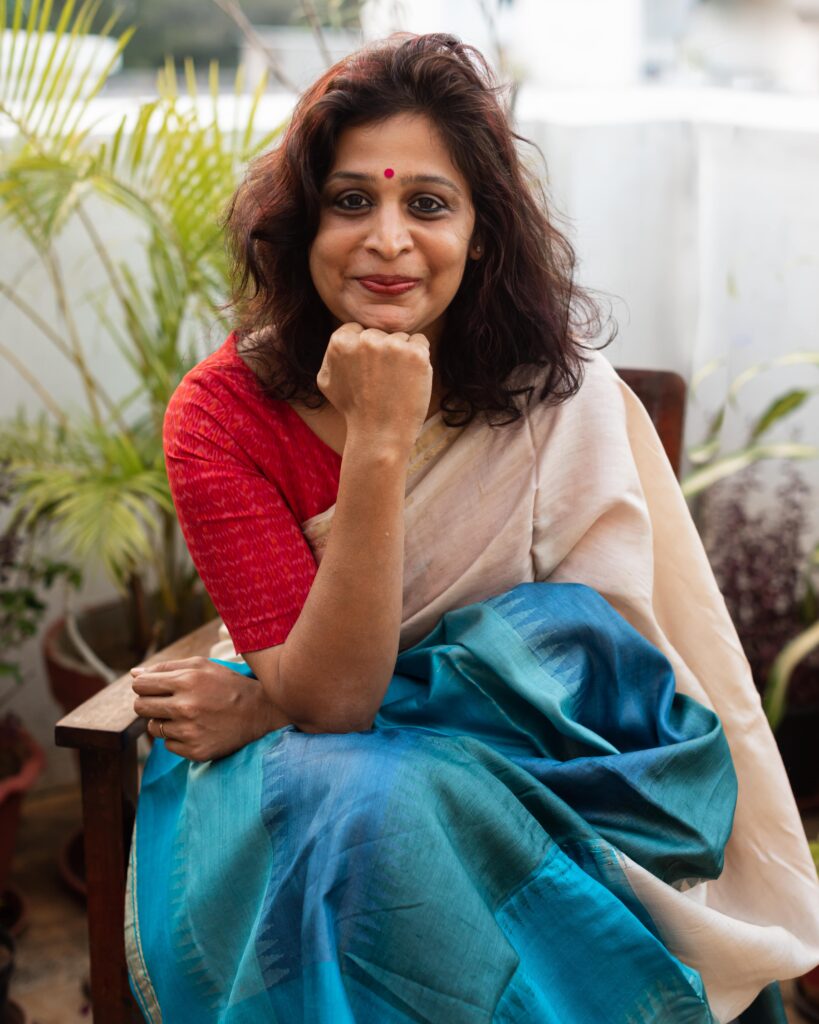
As a huge loyalist of the world of social media, Akhila Krishmamurthy, Founder of Aalaap, shares some thoughts on the good, bad and the ugly and why dabbling with it, is a story of to each, its own Over the last two-and-a-half-years or so, around the time we all burrowed ourselves into the security and comfort of our homes, while an epidemic gripped the world and rattled our senses, artistes and arts organisations from across the world, turned to social media as a means of refuge, a source of succour. Through the years of the lockdown, personal social media handles became platforms for artistes to share, showcase and amplify their work with a larger universe. Some artistes had already built a brand identity on these platforms; while some others started afresh recognizing its power and potential for networking and as a means to build for oneself a brand of one’s own. A handful of artistes consciously opted to stay out of it, away from it, choosing to neither share nor express their points of view on the arts, or things off it, on these platforms. Over several conversations with several artistes – those who used social media extensively, moderately or chose not to engage with it at all – I take home many mixed perspectives and recognize that like most things that are inherently personal, social media too is a matter of choice. And like all the best things in life that must not be consumed in excess, social media too, we can conclude is an indulgence where it is crucial to apply the principles of moderation and caution. Thanks to Artificial Intelligence, my feed was exclusively dancers and all things dance. And while it was fantastic to discover young and new artistes from across the globe, I also grappled with a sense of angst as I wondered about the principles of good content, and how the ephemeral nature of social media was also crippling our brains and minds, shunting our focus, overloading our senses and making us inherently fragmented and distractible as human beings. I realized the first thing I would do, when yet another dance video came my way was to check its duration; and I realized that on some days, even watching a two-minute video seemed like a Herculean task; the mind had already moved on and was restless to check the next reel, the next post, the next new dancer sharing her dance or the old dancer giving her dance a new spin! But before you begin to question me about my value judgements, let me admit that I, as an individual and in my capacity as the founder of Aalaap, am hooked onto social media. It is where we have shared our joys and fears, our angst and anxieties, our growth and journey, our events and initiatives. As a performing arts magazine that was born in 2014, social media became a natural extension for us to curate content that we believe is honest, authentic, objective, inclusive, diverse and truly a celebration of the dance community, at large. And we have been on this bandwagon well before the pandemic arrived; we didn’t panic when we had to transition into this medium because even before that, we have been busy on these platforms, bringing people together, amplifying their stories and ours and doing our bit to create a culture of happiness and harmony amongst the community. But social media, we realise, one day after another, is a beast of its own and one that we need to negotiate our way through; it’s almost like a lover who will play hard to get (followers in this case) if you don’t water it consistently or allow it some outdoor so the sun shines its light for growth. Social media is a constant work-in-progress but also one that you need to think through in terms of the very principles of journalism – what, where, when, why, who, how! Everyday, we look through our content through these parameters and attempt to share content that truly elevates and brings joy. With the world now opening up, some artistes who were insanely active on social media have abandoned it for the real world; some others – like us – continue to stay with it because this is what we know and can do and don’t have the bandwidth or funds to curate large-scale events that need patronage and sponsorship. The best kind of growth on social media is also one that is organic; that believes in putting out good content and hoping for those who really find value in it to like it and share their comments on it. There are options aplenty to grow the numbers but honestly, what’s the point? Perception, perhaps? Would you like one million fake followers or a handful that truly engages with you in a manner that allows for mutual growth? We just wrapped up a conversation with two young dancers who spoke about how social media in the years of the lockdown opened up possibilities aplenty in terms of networking and opportunities and self-growth. I want to smile because I know that those who are committed to it sincerely, have truly benefited from it; the fly-by-night operators have gone away, already! Maybe they are not meant to stay! And maybe it’s better that way!
Point of View
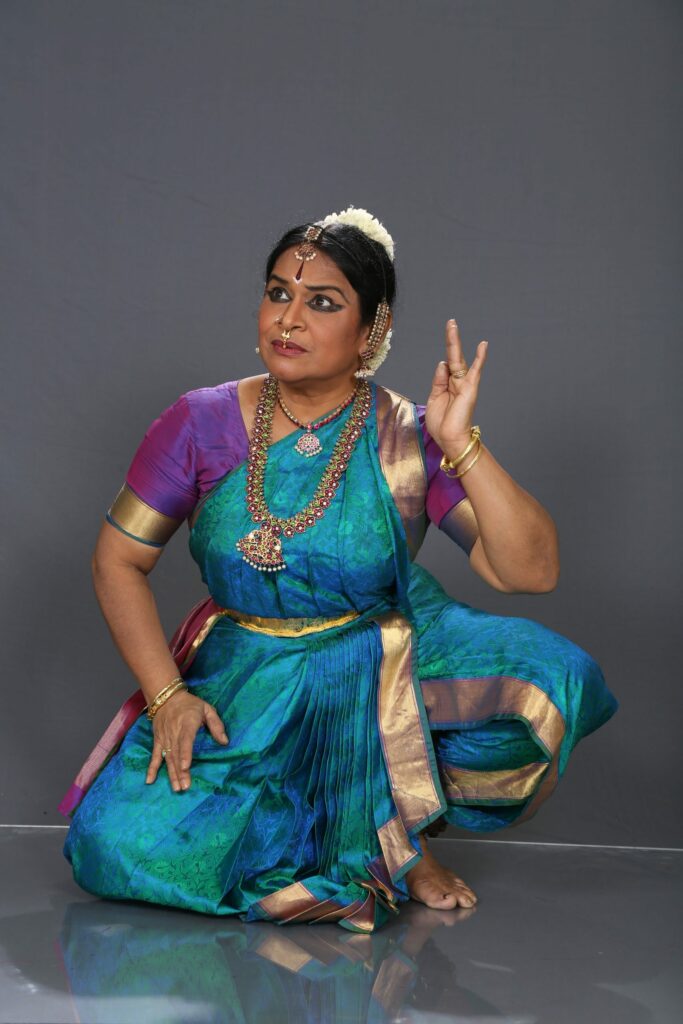
The Dynamic of the Abhinaya Bharatanatyam exponent, Bragha Bessell reflects on all things Abhinaya, how she learnt it from her guru, and how Abhinaya is also a constant work-in-progress Let me start with Abhinaya, the art of expression. Let me reflect upon how it was taught to me and how it is taught in the world today. Most of the time, I try to follow the method in which Bharatanatyam exponent, Kalanidhi Narayanan – Maami, as we would call her – taught us. She’d first have us explore the lyrics and its meaning and then move to understanding the character and the choreography thereafter. Having said that, sometimes some small adjustments need to be made. Maami always taught classes, one-to-one. When I was invited to teach at the Kalakshetra, I had to teach to a group of students, together. This meant that I had to re-envisage the methodology a little to be able to reach more students within a short span of time. The style of teaching a private class, one-to-one, needless to say, is more intense, immersive and personal. For a group class, the approach needs to be quite different. Time is also a factor and the possibility to monitor progress and performance is also often not the same. Having said that, I must add that we all must understand that the arts cannot be static. It cannot stand still. Society keeps changing all the time and the arts is a direct reflection of the society that we live in. So, change is the only constant. Over the years, there are many new innovative ideas that have come our way. We see so many collaborative works of art, and so many new dance styles, themed productions, research subjects, et al. What has also changed is the time and the luxury of time. Back in the day, we’d take a month or more to learn an item. Through the year, we would have only two or three individual programmes and a few group performances for our gurus in a whole year. This allowed us time to soak in learning, understanding, practising and absorbing the pieces that we learnt before we took them to stage. Today, youngsters have many more opportunities as far as performances are concerned and as a result, the process of learning has had to undergo a shift. They have had to speeded up the overall learning process which in many ways can hamper and reduce the time spent on learning and understanding items. There’s also little time for reflection and introspection, both of which are crucial. What is also important is to repeat and keep returning to pieces that one has learnt; in fact, I’d say that only by the art of repetition does one comprehend and discover the depth of each and every piece. There are a few items that I have been performing over the last four decades or so and every time I perform them, I’d say my response to it is different. You refine it until you capture its essence; and once you have tasted that essence, you want to keep striving to capture it in all its glory. Having said that, and having established that change is the only constant, I’d also like to say that the art of Abhinay is constantly a work-in-progress and one that reflects the times that we live in. For instance, a 40-year-old dancer should not dance the way a 20-year-old does or can. Her performance should be a reflection of what and who she is now; it should be a reflection of her experiences. With the artiste evolving, so does the audience. Thanks to social media and its powerful presence and permeation into our lives, audiences have also evolved a great deal and are well-informed so it’s crucial for artistes also to constantly think of ways to be able to connect with them. After all, the artiste and the audience go hand-in-hand. One hand cannot clap without the other. Similarly, an artist cannot perform without an audience. The main purpose of arts is Rasa. Whatever changes we face in the world, it’s important they do not disturb the aesthetic beauty of the art form nor the values that our gurus nurtured in us.
Point of View
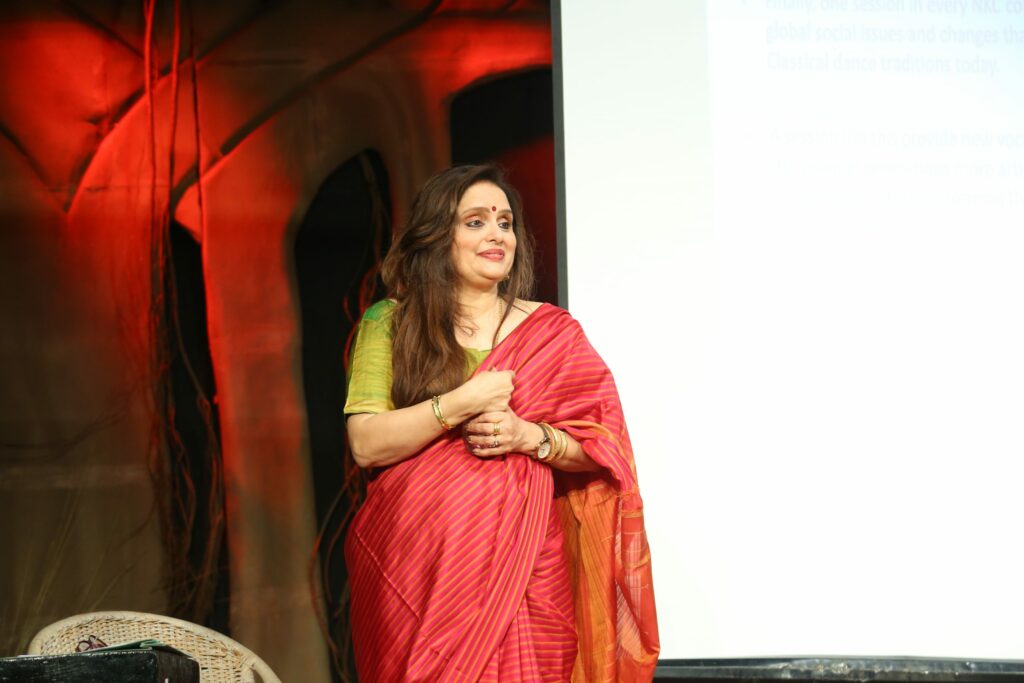
A Roots Perspective As part of the Natya Kala Conference NKC 2022, Dr Avanthi Meduri, spoke about the Bharatanatyam trees of T Balasaraswati and Rukmini Devi. Here’s an excerpt of her talk on these roots/routes In 2019, Rama Vaidyanathan rang me and asked if I would like to speak about the transnational legacies of Balasaraswati and Rukmini Devi. Rama explained that the younger generation know very little about these legendary pioneers and a lecture focussed on these women pioneers would be useful to them. She also requested that I speak in my role as an ‘academic’ and bring international discussions about Indian classical dance into the NKC forum with a view to generate inclusive debate and discussion. Since I had been given a brief, I followed through and spoke – at the Natya Kala Conference 2022 in December – as an academic who has researched the modern, colonial, national, diasporic, and global history of Bharatnatyam in the three countries of India US and UK, where I have lived and worked in the last two decades. The legendary T Balasaraswati and Rukmini Devi, were born into what is known as the greatest generation, which is the Western demographic term for a cohort of people born between 1900-1924. In the 1930s and 1950s, the two dance pioneers constituted a roots-based cultural history and aesthetic pedagogy for 20th century Bharatanatyam that was grounded in Indian tradition, and spirituality. They gave this as a historical gift to five generations of dance students who learned Bharatantayam in the Silent Generation also known as Traditionalist Generation (1928-1945), the Baby Boomers Generation (1946-1964), Generation X (1960-1970s) the Millennial Generation (1981-1996) and Generation Z (1996-2022). Constituted self -consciously within the ideological worldview of Indian cultural nationalism in the 1930s, the roots approach manifests itself as a foundational paradigm for the classical arts of India and has been used creatively by five generations of dancers, dance teachers, and scholars in India and abroad. It is this transhistorical paradigm that was renewed in Natya Kala Conference’s (an annual dance conference of the Krishna Gana Sabha) 40th anniversary celebrations in radically innovative ways over five days in the last week of December. A roots perspective is evolutionary in orientation and traces cultural continuities between historical pasts and contemporary presents. The approach looks backwards to cultural pasts, ancient traditions, literature, rituals and aesthetic texts to describe and analyse contemporary Bharatanatyam. Cultural ancestry, lineage, tradition, heritage, authenticity and cultural continuities are hallmark features of the roots-perspective. Bala developed her roots-based approach as an insider to devadasi traditions and focused on tradition, spirituality and the hereditary musical traditions of her family. Rukmini Devi developed her roots-perspective as a Brahmin outsider to devadasi dance traditions. Unlike Bala, Rukmini Devi did not inherit the dance tradition, but she laboured to possess the tradition by learning Bharatanatyam traditionally with doyens Meenaskshi Sundaram Pillai and Gowri Amma and also by associating Bharatanatyam with the galaxy of hereditary nattuvanars and music gurus that she gathered in Kalakshetra. Together and individually, both Bala and Rukmini Devi created two Bharatanatyam banyan trees which came to be known as the Balasaraswati and Kalakshetra styles of Bharatanatyam. Unsurprisingly, the dancers downplayed the stylistic differences in their modern recreations and maintained that their dance styles were continuous with and like the traditional Tanjore style represented by doyens Meenakshi Sundaram and Kandappa Pillai respectively. By not focusing on their own innovations, both Bala and Rukmini Devi articulated two very different roots- based history and aesthetic pedagogies for 20th century Bharatanatyam. In this paper, I integrated the roots’ paradigm, with travel routes and the travelling history of Bharatanatyam. I showed how the branches from the Bharatanatyam banyan trees that Bala and Rukmini Devi nurtured within the institutional context of MMA and Kalakshetra extended out of the remit of the institutions, entangled with branches from other Bharatanatyam trees founded in India and abroad in the period from the 1930s down to the present. The spreading branches, forged through travelling student communities, created a global, social structure and system for the widespread dispersal of Bharatnatyam both within India and the world at large. It is not surprising that, it is only after the demise of the dance pioneers in the 1980s that scholars working in India, US and UK were able to articulate a modern, revisionary socio-cultural history for twentieth century Bharatanatyam. Interestingly, this revisionary history was articulated by focusing on the transnational legacies of Bala and Rukmini Devi. In this lecture, I described how this global modern dance history was articulated around Bala, Rukmini Devi and devadasi women in the 1980s and 1990s and discussed the new challenges and opportunities opened up by this new field of dance studies in India and the world at large. I believe that we need to engage seriously with this transnational history, which is inscribed in a thirty-year history, because it is part of the living, practicing history of twentieth and 21st century Bharatanatyam. Millennial generation dance students need to know this modern, global dance history if they wish to pursue Indian dance studies either in India, US, Canada, UK, Australia or the world at large. In conclusion, some questions… Is Bharatanatyam an appropriated tradition? When did this appropriation occur, in the 1920s, 1930s, 1940s, 1950s, 1980s, or 1990s? Is Bharatanatyam a Sanskritized Brahmin tradition today? Have the Tamil roots of Bharatanatyam been invisibilized by the foregrounding of the Natyasastra historiography? What is the provenance of caste in the 20th and 21st century revival? Can caste be isolated as a single-issue or must it be seen dialogically in relation to class and gender? Should the cultural policy for Bharatanatyam and Indian classical dance be updated to reflect the changing aspirations of new generations of classical dancers wishing to make dance a profession and career both in India and abroad? I put forward these questions in the NKC platform in the hope that new generation dancers, dance teachers, academics, and scholars will engage these by taking seriously the social history of
Point of View
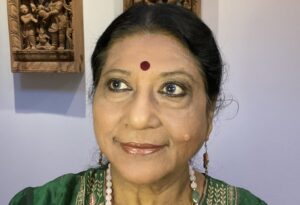
Hema Rajagopalan, Artistic Director of Natya Dance Theatre talks about the changing trends and dynamics in the world of Indian classical dance The term classical stands for something that has been developed over a long time with a keen sense adhering to aesthetic principles and traditions. Creativity is at the very core of all our Indian Classical arts and springs from the roots, like water from a spring flowing in a continuous evolving stream. The various manifestations are bound by parameters laid down by traditions deeply connected to the art form’s reference points. Artistes must not create newness but must find them. Wanting to present something new has become trendy. We see a lot of fresh elements that add to raising the aesthetic enjoyment of the Rasika but some others that simply take away that quality. Thematic presentations Thematic solo performances of the Margam, a new trend has now become a norm. This can be challenging to create a performance with variety but definitely creates an interest in the audience. The traditional margam is often replaced these days by secular content on various topics. Choreography Since the mid nineties dance dramas and thematic group productions have engaged more audiences than a solo performance. Even pada varnams and slow paced padams are being presented as group choreography. While such presentations offer a fresh look and could be good, they often take away the depth of Abhinaya portrayed by soloists. Dancers are presenting works on secular themes and social issues like climate change, water scarcity or the plight of today’s farmers, intending to connect with diverse audiences to make a difference to the world. The use of space, geometry and creative movement vocabulary is being given more prominence and this certainly enhances the artistic quality. Music Musical accompaniment has been evolving. New trends being the addition of western instruments like the Drums, Saxophone and Piano. Music directors are incorporating more orchestration which seems to appeal to today’s audiences. Even if movements lose integrity, Nritta or pure dance performed at a high speed is commended. Introduction of silences, voice overs, prolonging emotions, creating more drama in lengthy items like a Varnam, are new ways of presenting content, sometimes very engaging. Props/ Sets/ Lighting The use of a variety of objects as props to express has become popular. Productions have come a long way by way of sets whether projected on a screen or on the floor including dancers sometimes interacting with those projected images/ videos etc. Lighting: From simple general wash for a solo performance, it has now become very necessary to involve a lighting designer who adds new dimensions to the content. Whether it is the Haze, LED lights, overhead spots or moving light that creates a path, the dancer seems to depend a whole lot on lighting. To summarize, I want to say that changes are very necessary in every aspect of the performing arts but we need to maintain a balance keeping in mind symmetry, harmony and rhythm in order to taste the beauty of Classical Indian Dance.
Point of View
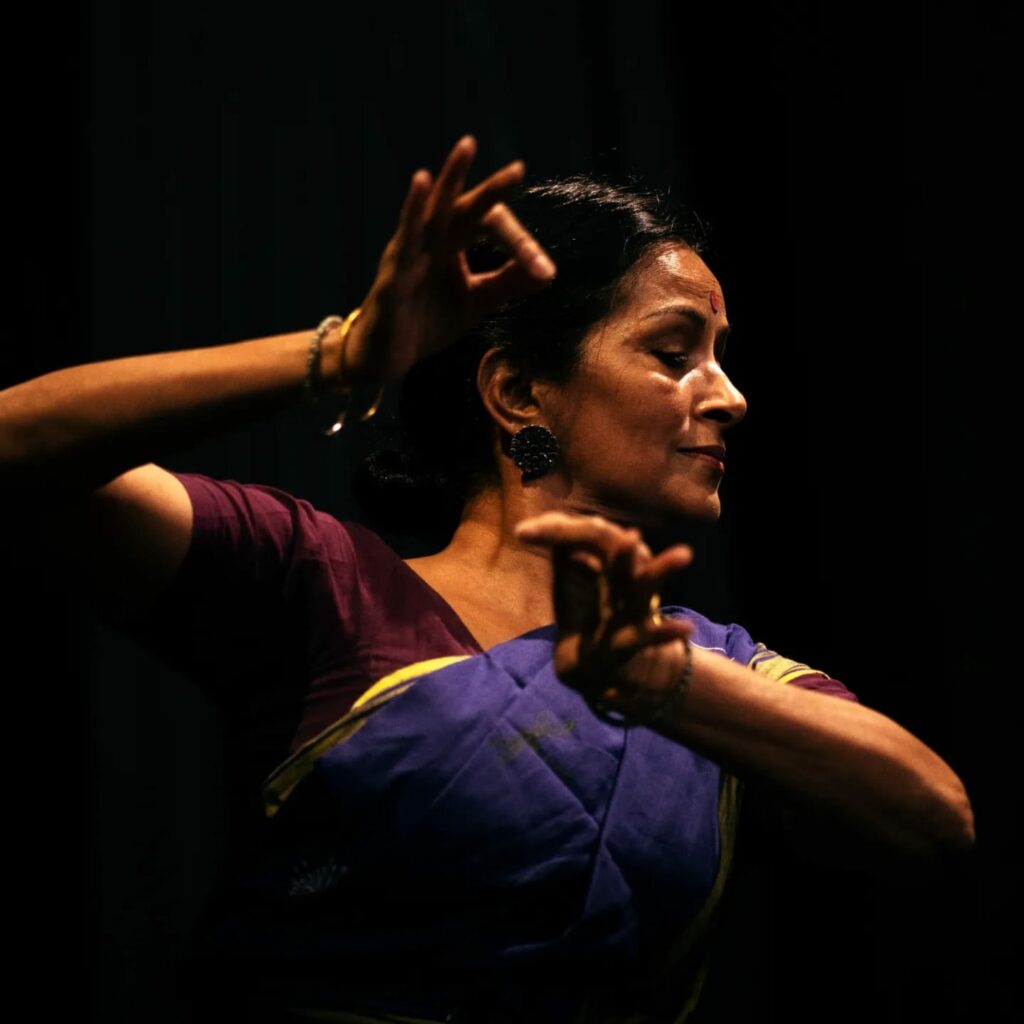
Documenting Transitions Vidhya Subramanian, Bharatanatyam exponent, based in Chennai, shares her perspectives on the many shifts – over time – in teaching and learning in the world of dance Krishna transitions from desire to duty, from lover to king, from Gokulam to Mathura, from a life of leisure to the Gita. Change, sometimes abrupt and at other times measured, is a reality of life and transience is the only constant that has potential for growth but also results in loss. Transitions can be both appealing and arduous. I learnt from a traditional nattuvanar, Guru SK Rajarathnam as well as from Kalanidhi (Narayanan) Maami. How I teach today is, in many ways, informed by how they taught and yet also it is an amalgamation of my performance experience, life lived in the US, my move back to Chennai, and my personal negotiations with the art. Pedagogy was organic when I learnt, methodology developing simply from the day-to-day-ness of teaching and learning. Class would start without much preamble, a simple thatti kumbidudhal, and then on to the item/s to be worked on for the next two hours. With Kalanidhi Maami, I was first introduced to dialogue and analysis, although mostly pertaining to the composition being learnt. All through my learning period, there was no analysis of an idea, conversations about inward journeys, articulation of process, not even a warm-up or cool down. All of these, barring the warm-up and cool down, were simply present in the rigour of dancing, a rigour that revealed much more than words, if one had the patience. Lack of patience wasn’t a choice. Teaching became a part of my life at a very early age, courtesy, my move to the USA. As a young teacher away from home, I relied heavily on how I had learnt as a way to teach. Over time, I added warm-up, adavu categorization, theory lessons, accountability sessions, practice logs, strength training, stretching, a handbook, conversations, and social experiences with students. While setting compositions on my students, I chose to focus on the individual and their strengths/weaknesses as a dancer and a human, in part similar to the way I had learnt. The years of dancing, teaching and living in the USA, as well as a Masters with a focus on Bharatanatyam, meant a gradual expansion of methodology and management. Coming back to India regularly revealed that some of my peers in the field were doing the same. Words such as choreography, process, emotional access, relationship with space, balance and so many more we take for granted today, took on a deeper meaning as an entire generation of dancers began searching. Technology somehow both adds to and subtracts from this journey. Today, we have a young dance generation starved to learn, create, articulate, grow and disagree. It is both energizing and joyfully exhausting to engage with many of them. Teaching is an extension of all the work one has been doing so far and a necessary transference of legacy. For me it continues to be focused on the individual, except merged with the conversation that enriches the process. For many young dancers, the cerebral and the corporeal are in a simultaneous pact in the strive for excellence. Once in a while though, it is necessary to silence that head voice and simply dance. To let the emotions surface, to even revel in them, find the silence in them. The transition into an era of abundance has already occurred. As an entire generation of dancers matures in experience, it is important to reflect upon the conflict between duty and desire, to pause and wonder what defines growth and what has perhaps been lost and left behind.